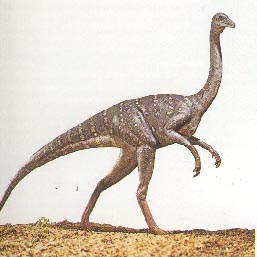Cóóóó có có có cóóóóóó !! As galinhas tem dentes no pais dos banguelas


The origin of birds within therapod dinosaurs. Nature Vol. 421, page 323, January 23,2003
fonte:
Microraptor gui: Bird or Dinosaur ?Shuvuuia deserti - 80 milhões de anos
 http://www.luisrey.ndtilda.co.uk/html/shuvuu.htmBuitreraptor gonzalezorum - 90 milhões de anos
http://www.luisrey.ndtilda.co.uk/html/shuvuu.htmBuitreraptor gonzalezorum - 90 milhões de anos 
 Microraptor zhaoianus - 120 milhões de anos
Microraptor zhaoianus - 120 milhões de anos


 Sinosauropteryx prima - 124 milhões de anos
Sinosauropteryx prima - 124 milhões de anos

Protopenas:
 Caudipteryx - 125 milhões de anos
Caudipteryx - 125 milhões de anos
 Sinornithosaurus millenii - 125 milhões de anos
Sinornithosaurus millenii - 125 milhões de anos
Protopenas:

Dá para ver alguns dentes:

 Protarchaeopteryx robusta - 128 - 110 milhões de anos
Protarchaeopteryx robusta - 128 - 110 milhões de anos


Protarchaeopteryx robusta. a, Outline of the specimen. b, Outline of the left dentary teeth. c, Drawing of the front of the jaws, showing the large size of the premaxillary teeth compared with maxillary and dentary ones. Abbreviations: Co, coracoid; d, dentary; F, femur; f, feathers; Fib, fibula; Fu, furcula; H, humerus; m, maxilla; P, pubis; pm, premaxilla; R, radius; S, scapula; St, sternal plate; T, tibia; U, ulna. Numbers represent tooth positions from front to back. (after Ji et al., 1998).
Dilong paradoxus - 130 milhões de anos


Um dos meus favoritos:
Microraptor gui - 136 milhões de anos
 Dados interessantes:Ornithomimus - 65 milhões de anos
Dados interessantes:Ornithomimus - 65 milhões de anos 

Canaliculos em osso de Ornithomimus, similares as aves:
Em osso de Ornithomimus ( seta azul ):

Em osso de águia :

fonte:
Microscopic bone evidence supports dinosaur-bird evolution linkApesar de que ainda não foi encotrado nenhum com penas, eles já começaram a ser representados desta forma:
Velociraptor Mongoliensis - 90 milhões de anos

A "coisa esquisita":
Longisquama insignis - 220 milhões de anos


 Um artigo interessante sobre o Longisquama insignis:http://www.abc.net.au/science/news/stories/s142745.htmTextos interessantes:
Um artigo interessante sobre o Longisquama insignis:http://www.abc.net.au/science/news/stories/s142745.htmTextos interessantes:-
Dromaeosaurs with Feathers: Some, or All?-
http://wiki.cotch.net//Downy_Dinos[ ]´s